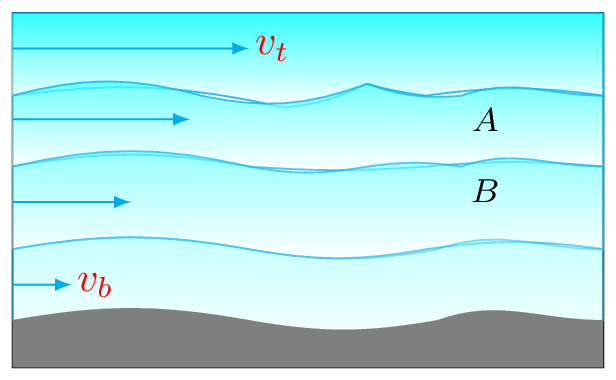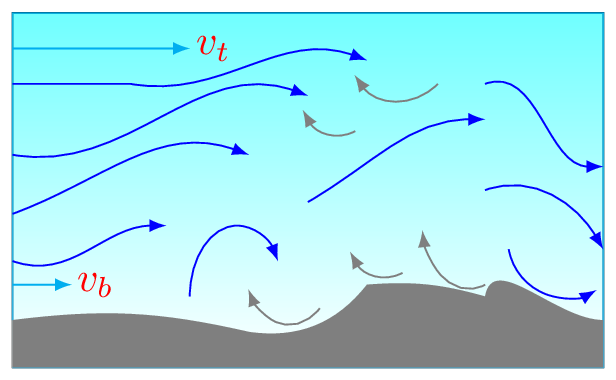Section 9.4 Viscosity
We may have experienced that pouring a cup of water or milk is much easier than pouring a cup of honey or glycerin. Water or milk is less sticky than honey or glycerin. On this experience, we can say that water like fluid is thinner and honey like fluid is thicker. The property of fluids which makes them flow differently than one another is called viscosity. Water has low viscosity, whereas honey has high viscosity. Actually there exists some kind of friction between the adjacent layers of fluid when they flow. viscosity is an internal friction (or a drag force) between the adjacent layers of fluid as they move past one another. In liquids viscosity arises due to the cohesive forces between their molecules, while in gases it arises due to the collision between their molecules.


To understand viscosity more clearly, let us know about the types of fluids flow. Laminar flow: It is a smooth and continuous flow of the fluid in layers that do not mix. Turbulent flow: It is the eddies and swirls that mix layers of fluid together. In laminar flow layers of fluid flow without mixing and it follows the same velocity and direction at every points of its motion, hence it is also called streamlines motion. In turbulent flow streamlines break up and mix together and the fluid moves with changing velocities and directions on every point of its path. Notice that viscosity causes drag between layers as well as with the fixed surface. An obstruction in the vessel or speeding up fluid velocity above a certain value leads to a turbulent flow. Reynolds number is used to distinguish the transition between laminar and turbulent flows.
